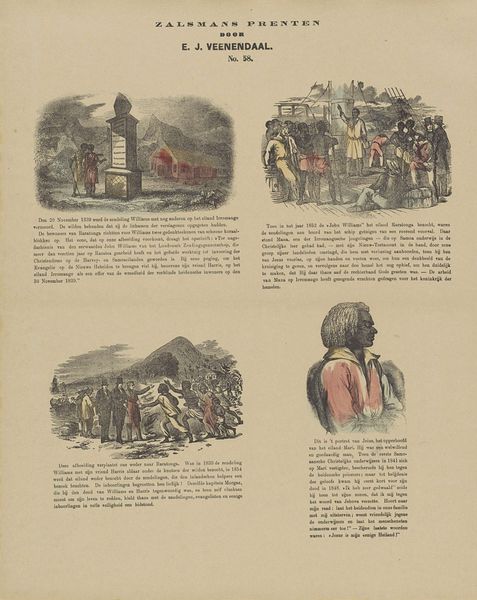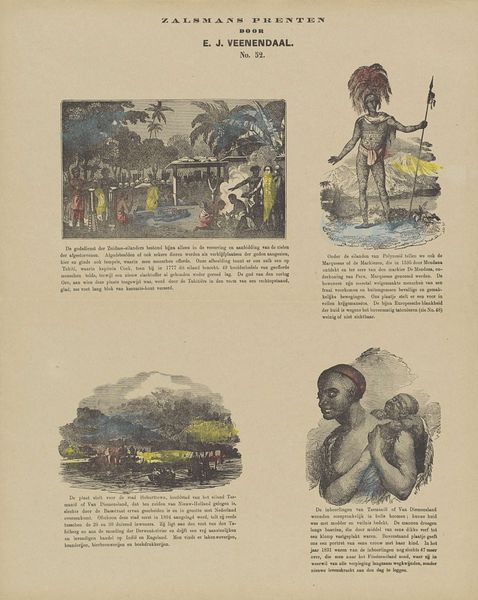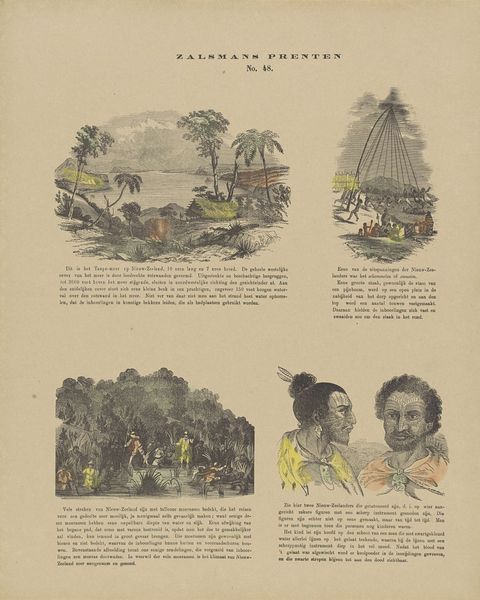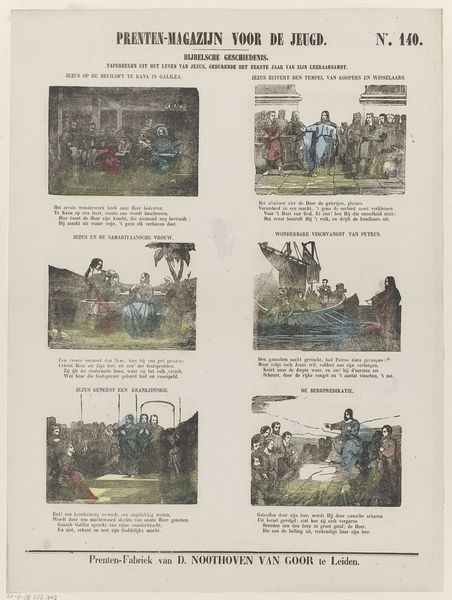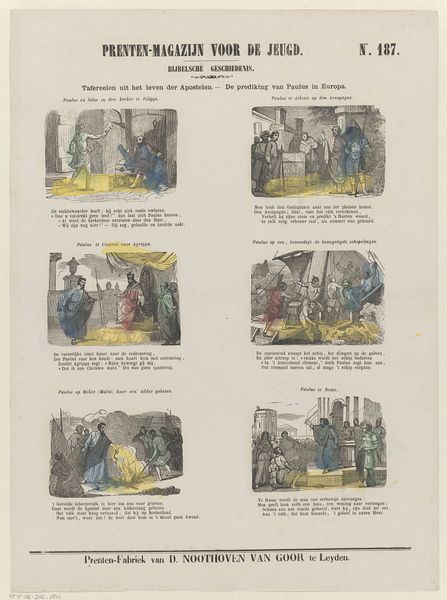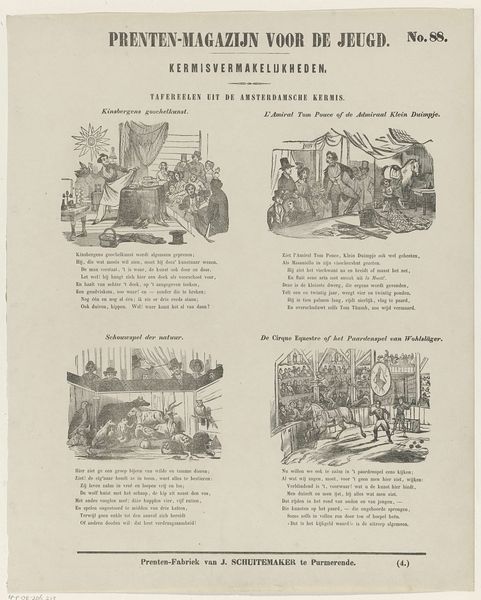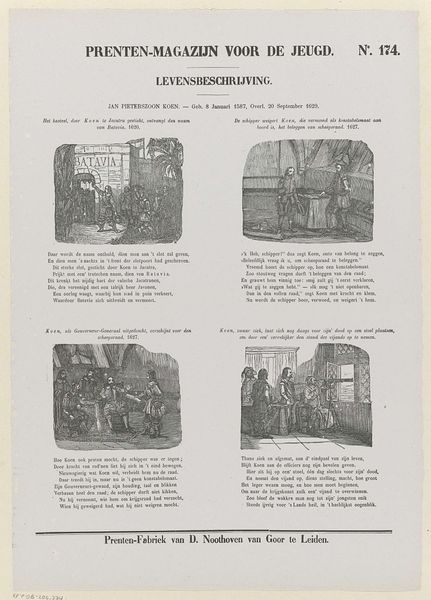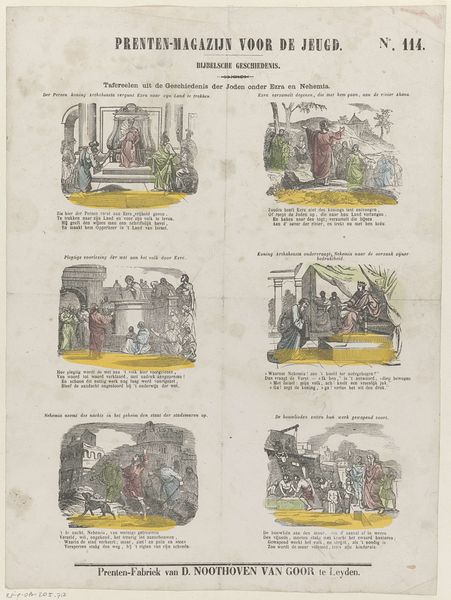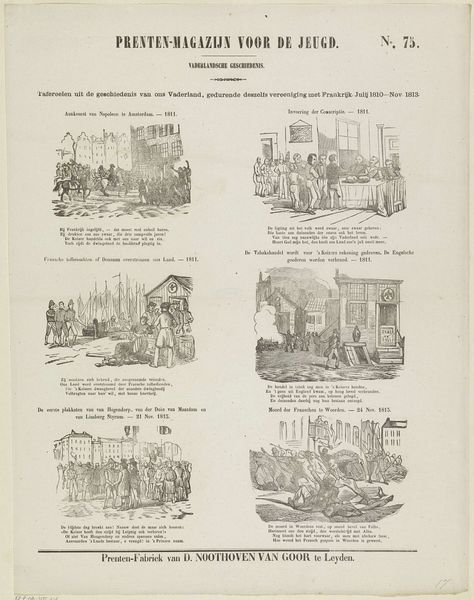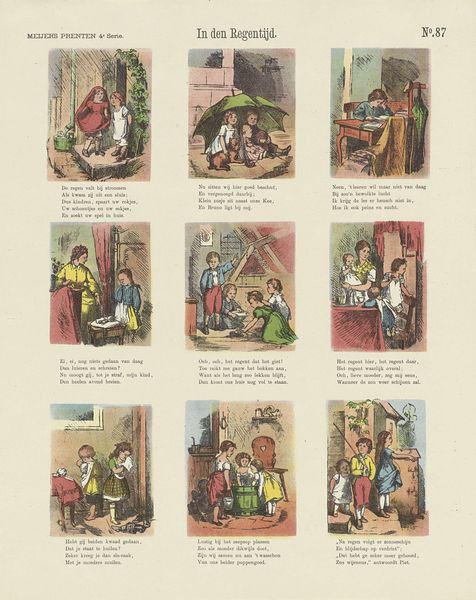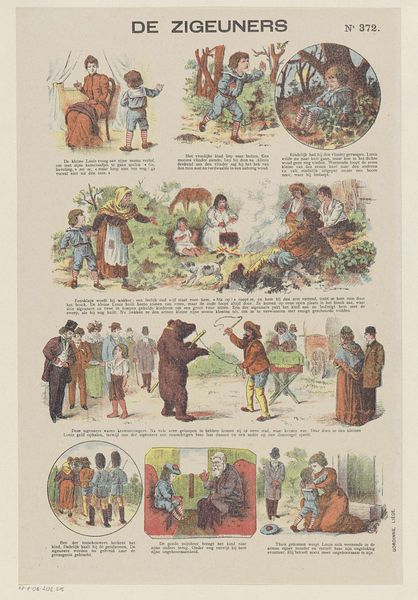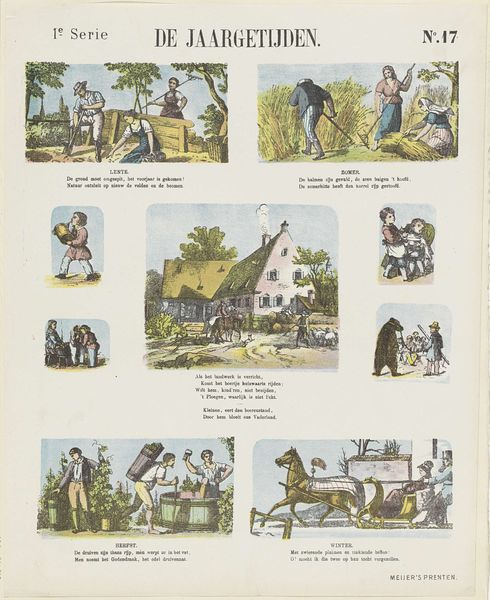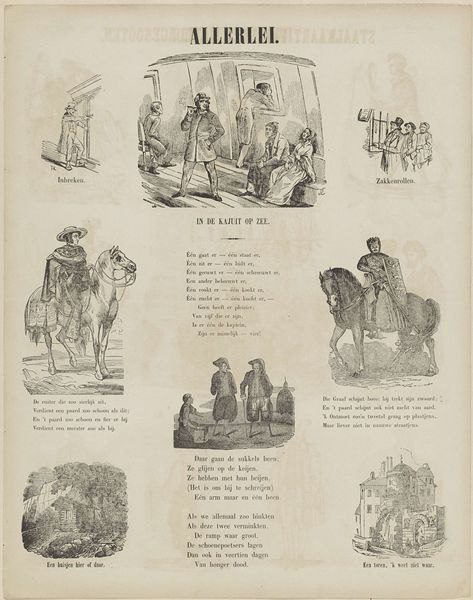
Zendingsscholen op de Cookeilanden en koning Kamehameha I en de eerste minister van de Sandwicheilanden en Hawaii 1869 - 1882
0:00
0:00
#
portrait
# print
#
orientalism
#
genre-painting
#
history-painting
Dimensions: height 426 mm, width 340 mm
Copyright: Rijks Museum: Open Domain
Curator: This intriguing print by Gerhardus Philippus Zalsman, likely created between 1869 and 1882, is titled "Zendingsscholen op de Cookeilanden en koning Kamehameha I en de eerste minister van de Sandwicheilanden en Hawaii". It depicts missionary schools in the Cook Islands along with portraits of King Kamehameha I and a prime minister. Editor: My first thought is how segmented it is—four distinct vignettes presented together. The tonal palette seems quite muted overall, primarily grey and sepia, accented with touches of green. It projects a feeling of… well, of compartmentalized observation, almost detached. Curator: Structurally, we see a clear separation. The upper registers contain genre scenes, portraying interior spaces—classrooms, we might assume. The lower half offers something akin to portraiture. These bifurcated compositions underscore a contrast— perhaps reflecting the distinction between colonizer and colonized, teacher and taught? The arrangement offers a calculated aesthetic statement. Editor: The historical and social context is obviously crucial. We're presented with these educational scenes intertwined with depictions of powerful indigenous leaders. Are we meant to interpret the juxtaposition as an endorsement of colonial assimilation? Note how Kamehameha is rendered— European clothing and somewhat stiff posture... Is this Zalsman showing us the cost of these educational missions in altering cultural identity? Curator: Your contextual reading is noted. Yet look at the compositional rigor: the linear perspective within those classroom settings creates an orderly visual progression that, one could argue, transcends pure propaganda. The color palette, subdued and consistent, further enhances a sense of unified intent behind this image, not one of brute force. It isn't about overt messaging; it’s a study in contrasts. Editor: Perhaps, but this image could also be viewed as a documentation— albeit biased—of the imposition of Western ideals onto foreign lands. Consider the very act of representation here— an outsider gazing in and curating an narrative of those encounters. Is the aesthetic intent you're noticing simply obscuring the power dynamics at play? It's too facile to only admire the artistry without questioning it. Curator: A powerful claim to consider when exploring such culturally charged subject matter. We would each have different impressions here; that seems clear. Editor: Yes, I agree. It's that friction – seeing both intention and potential implications— that keeps the past connected and engaging with the present.
Comments
No comments
Be the first to comment and join the conversation on the ultimate creative platform.
